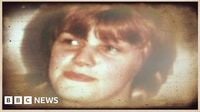On a cold December day in 1989, two builders working on a renovation project in Cardiff city centre stumbled upon a rolled-up carpet buried just three feet beneath the ground. What they found inside would shock the city—and, in time, lead to a landmark case in British forensic science. The skeletal remains belonged to Karen Price, a 15-year-old girl who had vanished eight years earlier, and whose disappearance had, heartbreakingly, gone almost entirely unnoticed.
Dubbed "Little Miss Nobody" by the press, Karen’s story is a haunting tale of a young life lost and nearly forgotten, but also of dogged police work and scientific breakthroughs that eventually brought her killers to justice. According to BBC Wales, Karen’s body was discovered outside a basement flat on Fitzhamon Embankment, just a stone’s throw from what would become the Principality Stadium. Her remains were so badly decomposed that traditional methods could not determine the cause of death. Yet the case would go on to break new ground in forensics, using techniques that would set precedents for years to come.
Karen’s early years were marked by turmoil. Her parents divorced when she was young, leading to custody battles and an unstable home life. By age 10, she was placed in care, and from 11 she was known to abscond from the children’s home where she lived. In July 1981, she ran away from the Maes-Yr-Eglwys Assessment Centre in Church Village, Rhondda Cynon Taf, and never returned. Astonishingly, there were no missing person appeals, no inquiries—she simply vanished from the radar of the authorities and, it seemed, from the world.
Crime reporter Tom Bedford, who covered the investigation, reflected on the tragedy in the Channel 5 documentary Buried Secrets: The Body in the Carpet. "It's incredible to think that a girl of that age, 15, can go missing and nobody notice, nobody care," he said. "I covered a lot of stories over 40 years, but I will never forget it." Bedford’s words echo the profound sadness at the core of this case: Karen was "known to no-one" and "wasn't listed as a missing person, nobody knew she had gone missing, nobody knew who she was."
The discovery of Karen’s body was grisly. Her wrists were tied with electrical flex, a plastic bag was over her head, and she was wrapped in a carpet. The builders, initially joking that there might be a body inside, quickly realized the horror before them and called the police. With no CCTV and little known about Karen’s final months, detectives had to rely on forensics to piece together the mystery. Maggots found in the carpet provided a crucial clue: flies do not lay eggs on buried remains, so the maggot activity indicated Karen’s body had been above ground for several days before burial. This allowed experts to narrow the window of her death to between July 1981 and March 1982.
Forensic dentist Professor David Whittaker examined the teeth, using their chromosomes and development to determine the sex and approximate age of the victim. He also noted pink-tinted cavities—blood-filled capillaries in the teeth—that suggested Karen’s death had been violent. Yet, even with these details, her identity remained a mystery. There were no missing person reports that matched the remains.
It was here that the case entered the annals of forensic science. Renowned facial reconstruction artist Richard Neave was brought in to build a model of Karen’s face from her skull. The result was uncannily accurate, and when a reconstruction was featured on a Crimewatch appeal on February 15, 1990, it captured the public’s attention. Two social workers from Pontypridd recognized the image and provided Karen’s name to the police. Still, it took a further scientific leap—extracting DNA from her bones—to confirm her identity by matching her to her parents. As BBC Wales reported, this was a "landmark" moment for forensics, and it was the first time such pioneering DNA methods had been used in a Welsh murder investigation.
The Crimewatch broadcast had another, unexpected impact. Idris Ali, a young man who had once been involved in the exploitation of girls estranged from care homes, was watching the program. Urged by a friend, he came forward to confess his involvement in Karen’s murder and implicated Alan Charlton, a man from Somerset who had lived in the basement flat where Karen’s body was found. According to court documents, the body was discovered "within feet of his back door."
Ali told detectives that Charlton had ordered Karen and another girl, aged 13, to strip so he could take nude photographs. When the younger girl refused, Charlton attacked her, prompting Karen to intervene. Charlton then turned his violence on Karen, slapping and punching her. Ali said he tried to intervene but was struck himself. Under threat, Ali admitted to holding Karen’s hands "for a very short time" while Charlton continued the assault. When Charlton stopped, "there was blood from Karen's mouth and she did not respond." Ali helped Charlton wrap Karen’s body in a carpet, where it was kept in a cupboard for four days—the window during which flies laid their eggs—before they returned to bury her in a shallow grave outside the flat’s kitchen window. This was the last time anyone saw Karen Price until her remains were uncovered eight years later.
Alan Charlton was described by prosecutors as "a psychopath" and was convicted of Karen’s murder, though he always maintained his innocence. He was released on parole in 2017 after an oral hearing. Ali pleaded guilty to a lesser charge, later claiming he did so only to get out of prison.
The tragedy of Karen’s life did not end with her death. Her father, Leonard Michael Price, told a BBC documentary that he had believed Karen had married and started a family, not realizing she was missing until the case came to light. "It's been sad for the family, at least she's at rest and at peace, and they got what they deserve," he said. Karen’s mother, Anita Edward, last saw her daughter in 1981 after a tearful argument and spent years hoping she would return. She wrote to social services in 1984 seeking information, but never received a reply. Anita died in 1992, aged 54, from acute alcohol intoxication, having never learned the full truth of her daughter’s fate.
The murder of Karen Price, who would have turned 60 in September, remains a stark reminder of the vulnerabilities faced by children in care and the failures of institutions to protect them. Yet, her case also stands as a testament to the power of scientific innovation and public engagement in solving even the most daunting mysteries. "I've covered thousands of stories and it's one of the saddest I have ever worked on," Tom Bedford reflected. "For a young girl to die in that way, her life snuffed out at the age of 15, it's just too sad for words."
While the questions around why no one was looking for Karen still linger, her memory endures—not only for the tragedy she suffered but for the hope her case brought to forensic science and the pursuit of justice.




